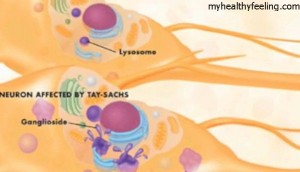What is Tay-Sachs disease?
In the United States, there are about 16 children diagnosed with Tay-Sachs Disease each year. A child can acquire this disease through autosomal recessive pattern. This means that the child can only inherit this trait if both of the parents are carriers.
Tay-Sachs Disease causes progressive destruction in the children’s nervous system. And as the disease advances, the child slowly loses his/her physical and mental abilities. The child becomes deaf, blind, and paralyzed, and death usually comes early in life. These happen because of the absence of the enzyme known as hexosaminidase-A (Hex-A) which causes the fatty substance in the brain to build up into toxic levels, hence affecting the brains’ nerve cells.
Types of Tay-Sachs Disease
There are three types of Tay-Sachs, namely, the early onset (infantile), juvenile onset, and late onset (adult). Compared to Early onset, Juvenile and late onset are milder forms and produces small amounts of Hex-A which is why symptoms mostly appear later in life.
Early onset is the type wherein symptoms appear as early as 6 months and most of these kids die at the age of 4. While Juvenile Onset Tay-Sachs shows symptoms at the age of 2 and the disease slowly progress until death comes usually at the age of 15.
The Late Onset Tay-Sachs (LOTS), or also known as Chronic Tay-Sachs, shows milder symptoms and usually occurs between adolescence and mid 30’s. Those affected don’t usually lose vision and hearing but instead lose their mental abilities. Compared to the other two, the life expectancy is usually unaffected.
Causes of Tay-Sachs Disease
The absence of the Hexa gene causes the development of this disease. It can be passed down to the children if both parents carry the same defective gene. This gene is located at chromosome 15 and is necessary in breaking down those fatty substances known as GM2 ganglioside accumulating in the brain. Without this gene, ongoing accumulation of fat in the brain results in progressive nerve damage.
Symptoms of Tay-Sachs Disease
For the first 3 to 6 months, a child born with Tay-Sachs will live like a normal child but for the next months and years, the child slowly loses the ability to hear, see, and move. The child will stop crawling, smiling, reach out for things, and turn over. And at the age of 2, a child with Tay-Sachs may experience seizures, vision loss, hearing loss, mental retardation, paralysis, and dementia. Death usually comes at the age of 4 or 5.
For Juvenile Tay Sachs, it has the same signs and symptoms as the infantile form but may only appear until the child reaches the age of 2 to 5. The disease slowly progress until death comes usually at 15.
For Late type of Tay Sachs, the affected individual usually lives a full adult life, but some may end up in a wheelchair. Symptoms may include slurred speech, muscle weakness, and behavioral changes.
Treatment of Tay-Sachs Disease
There is no known cure for Tay-Sachs Disease and even with best care, the affected children will still have an early death. Treatments available can only help slow down the progress and make the affected individual feel more comfortable but cannot really reverse the effects of the illness. Up to now, researchers are still looking for new ways to help children with Tay-Sachs Disease.
Tay Sachs Disease Pictures
Here are pictures of Tay Sachs disease affected children


